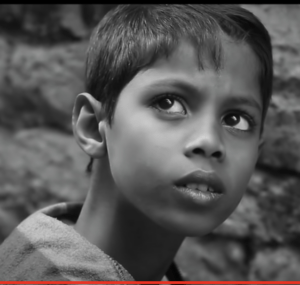Lesson unit by Rajni Bhargava based on the silent film Paper Boy: https://www.youtube.com/watch?v=neWPK3fRg5c
 A. Proficiency Level: Novice High/Intermediate Low; Time: 4X75 min
A. Proficiency Level: Novice High/Intermediate Low; Time: 4X75 min
B. Objectives: Students will be able to:
- understand the gist and summarize the main events of a movie, “The Paper Boy”
- understand and report simultaneous or sequential activities in the past
- use direct and indirect speech in authentic ways
Language Structures:
- use the perfect tense and the ergative construction with ने (review and practice)
- use infinitives with postpositions: साफ करने के बाद, काम करने से पहले
use कर construction - use cohesion markers, such as इस वजह से, इस लिए, के बाद, के पहले, फिर, के बावजूद
- use complex sentences with a कि connector followed by reported speech or indirect questions: उसने समझाया कि उसको क्यों काम करना पड़ता है; लड़के को मालूम नहीं था कि किस ने और क्यों उसकी ओर काग़ज़ और ब्रश फेंक दिया
C. Performance Assessment: Students pick activities from a choice board assigned to them.
Learning Episode 1: Students are assigned to watch the movie at home and note down 5+ objects/realia which they would like to know about. In class students watch the first part of the movie again, students ask their questions and the teacher provides the film glossary to support. The teacher provides the backdrop information (where the movie is set).
Learning Episode 2: In breakout rooms, in pairs, students are assigned to describe things which the boy does everyday using the vocabulary they have just been introduced to. They write these sentences using a google doc and share their observations with the class. The teacher introduces cohesion markers and infinitive+postpositions. Students expand their sentences with the new language targets to form 1+ paragraph/s.
Learning Episode 3: The teacher reviews the use of perfect tense with focus on the use of ने with transitive verbs vs no use of ने with intransitive verbs. The students transfer their sentences in the perfect in the context of what the boy did that day.
Learning Episode 4: Students then watch the rest of the movie and again in breakout rooms they retell what happened that day and write again on the google doc. Then they share with the class 5+ sentences using the perfect tense.
Learning Episode 5: As the ending is left to everyone’s interpretation students discuss what the ending means and what they think the boy will do in the future.
Learning Episode 6: After this students are given the choice board to complete the unit:
Students choose three tasks as they would play Tic-Tac-Toe.
| Find a partner: Create a short video explanation and a concept map of a word from the movie | Complete the who, what, where, when and why after watching the movie | Imagine you are the main character, write the story in a few lines from his perspective in the perfect tense. |
| Write three socio-cultural notes, one which you were not familiar with and two which you were familiar with. | Find a partner: Write 3+ questions about the story. Find a partner and take turns asking and answering each other’s questions. Audio-record your Q&A exchange | Describe an event in the movie. Explain why is it important to the plot of the story: when it happens, to whom, how, where, when. |
| Describe the main character: appearance, occupation, lifestyle, etc. Paste a picture of the main character and include specific details from the movie. | Find 3+ unfamiliar words in the movie, look up their definitions, and draw a picture that shows what each word means. | Imagine you are the main character and write the story in a few lines from his/her perspective in the perfect tense. |
Checklist:
-
Vocabulary: I use a variety of appropriate vocabulary for this task including useful words and phrases we have covered in class.
-
Language Control: I am mostly accurate when I use structures, time frames and word order that we practiced (including gender agreement, use of ने with transitive verbs in the perfect, passive voice, subjunctive, use of infinitives, obligatory structures, etc.).
-
Content: I meet the communication goal. My content is relevant to this topic.
-
Organization and Level of Language: My written and oral presentation is organized and has good cohesion. My sentence complexity is appropriate (including connectors, cohesion markers, relative-correlative clauses, etc.).
Grading: (A) -- 90-100%: STRONG -- Full evidence for targeted level and some evidence for next level (B) -- 80-89%: GOOD -- Full evidence for targeted level (C) -- 70-79%: DEVELOPING -- Partial evidence for targeted level (D) -- 60-69%: EMERGING -- Limited evidence for targeted level